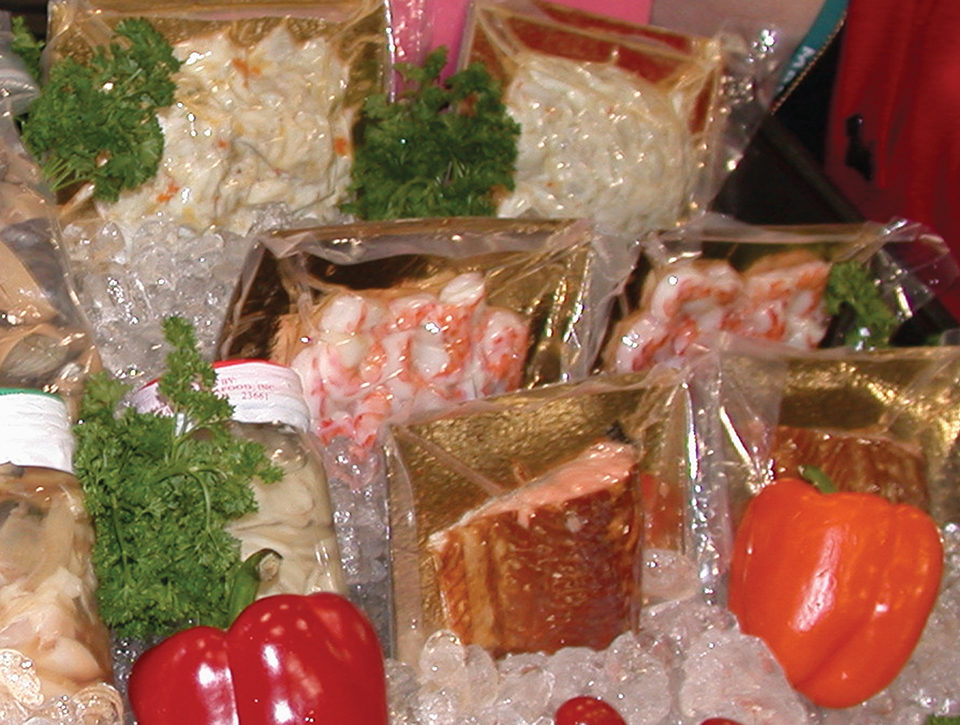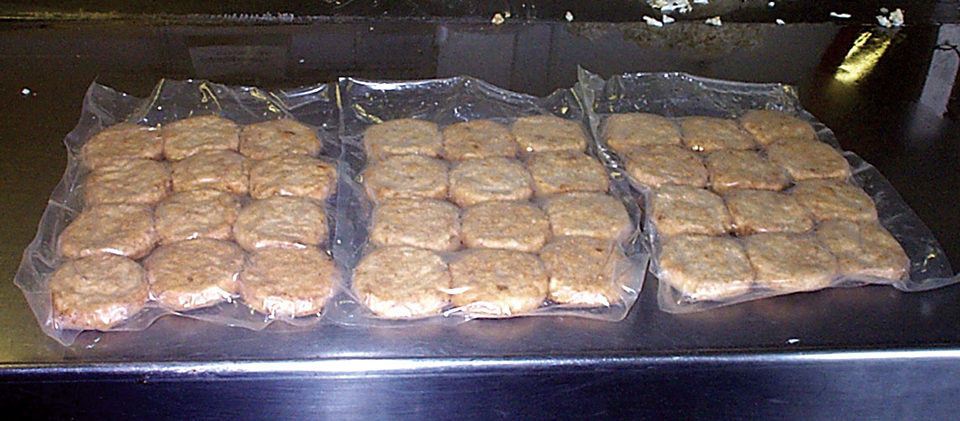C. botulinum can survive heat treatments through its ability to produce spores

Clostridium botulinum toxin formation on seafood can result in illness and death if a contaminated product is consumed. The toxin is one of the most poisonous naturally occurring substances known. It can be destroyed by heat (boiling for 10 minutes), but processors cannot rely on this as a means of control.
C. botulinum strains are divided into two groups: the proteolytic group, those that break down proteins; and the nonproteolytic group, those that do not break down proteins. All strains of C. botulinum grow best in conditions where little or no oxygen is present.
Certain psychrotropic strains of nonproteolytic C. botulinum primarily associated with fish can grow and produce toxin at temperatures as low as 3.3 degrees-C. Proteolytic strains can grow and produce toxin at temperatures slightly above 10 degrees-C, but these are more easily detected, since they also produce unacceptable odors in foods.
The greatest hazard of C. botulinum contamination in food comes from the nonproteolytic, psychrotropic strains because they do not cause odors that result in rejection of the food.
Heat treatment
Vegetative cells of all types are easily killed by heat. C. botulinum can survive heat treatments through its ability to produce spores that are very resistant to heat. The spores of the proteolytic group are much more resistant to heat than those of the nonproteolytic group. However, there are indications that some substances naturally present in some foods, such as the enzyme lysozyme, may enable nonproteolytic C. botulinum to more easily recover after heat damage, resulting in the need for considerably more aggressive processes to ensure its destruction.
Reduced-oxygen packaging
Packaging methods that reduce the amount of oxygen present in the package extend shelf life by inhibiting the growth of aerobic spoilage bacteria. The benefits of this anaerobic environment also come with increased potential for the formation of C. botulinum toxin before the product appears or smells spoiled.
Reduced-oxygen packaging methods include vacuum packaging and modified or controlled-atmosphere packaging, which directly reduce the amount of oxygen in packages. Packaging in hermetically sealed containers such as double-seamed cans, glass jars with sealed lids, and heat-sealed plastic containers; deep containers from which the air is expressed; or packaging in oil prevent the entry of oxygen into the containers. Any oxygen present at the time of packaging is rapidly depleted by the activity of spoilage bacteria, resulting in a reduced-oxygen environment inside the packaging vessel.
Temperature abuse
While processors usually provide proper temperature control of seafood products, temperature abuse is not uncommon throughout the distribution and retail chain. Additionally, some commercial equipment is incapable of maintaining foods below 7.2 degrees-C because of refrigeration capacity, insufficient refrigerating medium, or poor maintenance. Surveys of retail display cases indicate that temperatures of 7 to 10 degrees-C are not uncommon. Surveys of home refrigerators indicate that temperatures can exceed 10 degrees-C.

New packaging materials
Traditional control measures to prevent C. botulinum toxin production have included freezing, normal refrigeration temperatures of 4.4 degrees-C, and the use of time/temperature recorders or indicators. However, new packaging materials offer another method of providing protection from botulism poisoning.
In late 2002, the United States Food and Drug Administration issued permeability-rate guidelines for vacuum-packaged fresh fish that recommended an oxygen-transmission rate (OTR) at a specific temperature and relative humidity of at least 10,000 cc per square meter per 24 hours, which is delivered by, for example, 1.5-mil polyethylene film. This can be compared to an oxygen-impermeable packaging such as 2.0-mil polyester, which can have an OTR lower than 100 cc per square meter per 24 hours.
High-OTR packaging materials also prevent surface dehydration and freezer burn because of their exceptionally tight fit. The packages are leak-resistant, helping to minimize the risk of cross-contamination. The packaging film also has superior clarity and provides an unobstructed view of the product.
(Editor’s Note: This article was originally published in the July/August 2006 print edition of the Global Aquaculture Advocate.)
Now that you've finished reading the article ...
… we hope you’ll consider supporting our mission to document the evolution of the global aquaculture industry and share our vast network of contributors’ expansive knowledge every week.
By becoming a Global Seafood Alliance member, you’re ensuring that all of the pre-competitive work we do through member benefits, resources and events can continue. Individual membership costs just $50 a year. GSA individual and corporate members receive complimentary access to a series of GOAL virtual events beginning in April. Join now.
Not a GSA member? Join us.
Author
-

George J. Flick, Jr., Ph.D.
Food Science and Technology Department
Virginia Tech/Virginia Sea Grant (0418)
Blacksburg, Virginia 24061 USA[117,100,101,46,116,118,64,103,107,99,105,108,102]
Tagged With
Related Posts

Health & Welfare
Building a better shrimp nursery, part 3
Shrimp nursery systems offer significant potential for compensatory growth after juveniles are transferred to ponds for final grow-out. Nursery feed selection and their management are critical components of shrimp nursery systems.

Aquafeeds
Feeding considerations for hyper-intensive shrimp nursery systems
For an intensive shrimp nursery, the main goal in feeding is to supply each animal the proper quantity of feed where it can be easily accessed and consumed.

Intelligence
Post-harvest quality of freshwater prawns, part 2
Freshwater shrimp can contain pathogenic bacteria that cause illness unless care is exercised by producers, retailers and consumers. Many of the human pathogens can survive frozen storage, but are killed or inactivated by thermal processes.

Intelligence
Solutions to microbiological challenges in crawfish processing
Each stage of crawfish processing contains potential human health hazards that must be addressed. Bacteria flourish under elevated temperatures but replication can be halted in cold storage.

